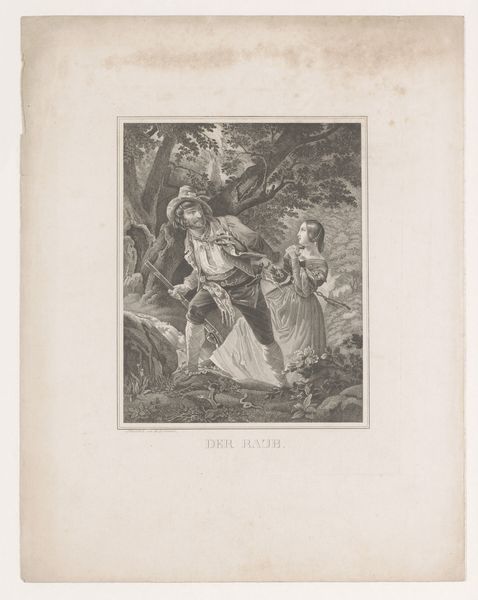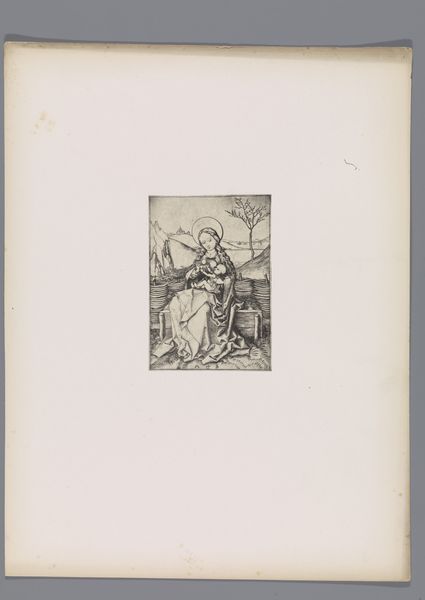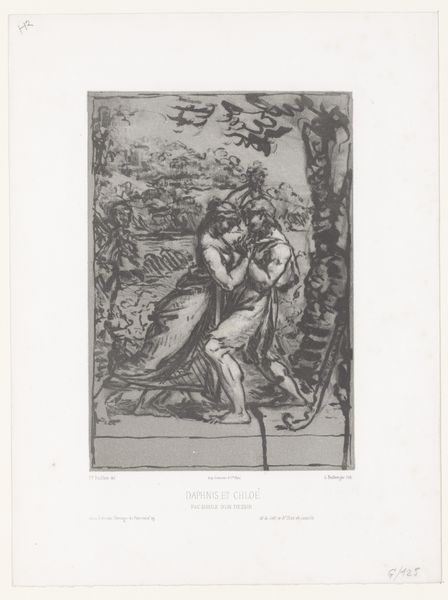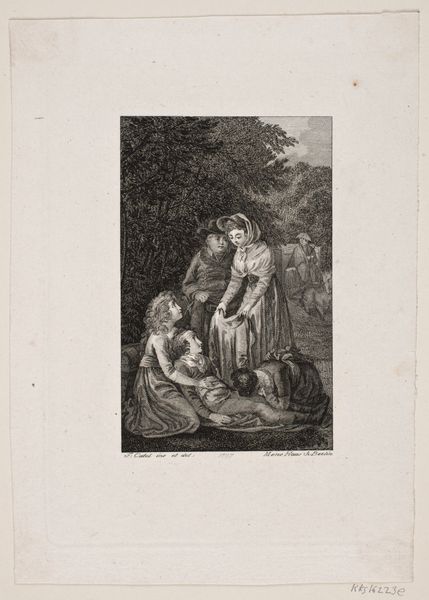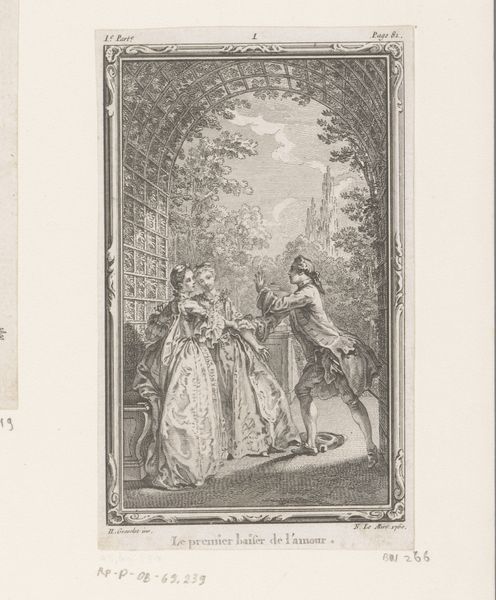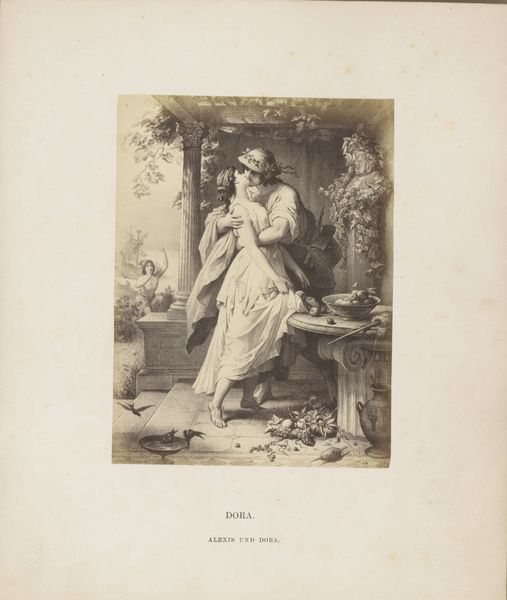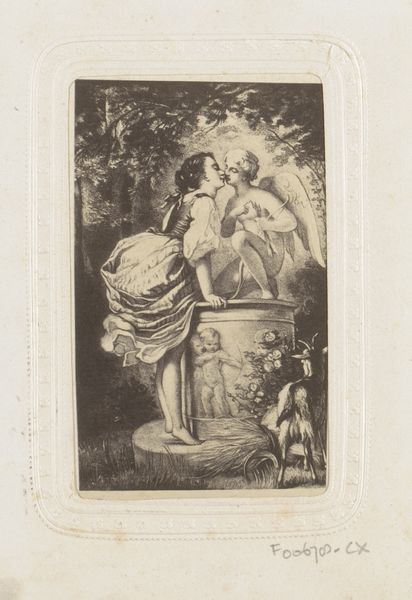
Fotoreproductie van een tekening van Lili uit Goethe's Lili's Park door Wilhelm von Kaulbach 1850 - 1900
0:00
0:00
Dimensions: height 211 mm, width 178 mm, height 132 mm, width 95 mm
Copyright: Rijks Museum: Open Domain
Curator: Before us is a photomechanical print titled "Fotoreproductie van een tekening van Lili uit Goethe's Lili's Park door Wilhelm von Kaulbach," dating from between 1850 and 1900. It’s currently held in the Rijksmuseum collection. Editor: It strikes me as theatrical, almost staged, with that central figure surrounded by fauna—birds taking flight, a peacock’s ostentatious display. It’s incredibly romantic, bathed in soft light, though it lacks true depth. Curator: Note that it's a reproduction, a copy of a drawing, which influences our reading of it. It's not just an image, but a technologically mediated representation of Kaulbach’s original creation and of the sitter. The production involves the layered labor of the artist and the printmakers and photographers involved in its reproduction. Editor: From a purely formal perspective, I'm intrigued by the interplay between light and shadow—the almost chiaroscuro effect which lends a painterly quality to what is, as you say, a mechanically reproduced image. See how the dark trees in the background frame the lightness of the figure? It creates visual drama, however artificial. Curator: Consider also the social implications. Printmaking democratized images, making them available to a wider audience beyond the wealthy elite. But simultaneously, this also allowed a much wider distribution for problematic themes. Editor: Yes, but within the frame itself, irrespective of context, observe the lines of her dress as they echo those of the doves’ wings. See the repeating curvilinear forms binding her visually to the park. Curator: Looking closer at the production quality, the use of toned paper as a base contributes to its almost sepia-toned, antiquated feel, suggesting not just an image but also its own historical context as an industrially created object. It reflects a 19th-century society grappling with mass production and reproducibility of the arts. Editor: An excellent point. Considering both context and composition helps understand its intrinsic aesthetic power and the cultural forces at play when this work was consumed. Curator: Absolutely. Through examining material conditions and their interplay with artistic agency, we achieve a deeper appreciation for both this particular photomechanical print and for our contemporary mediated reality.
Comments
No comments
Be the first to comment and join the conversation on the ultimate creative platform.


